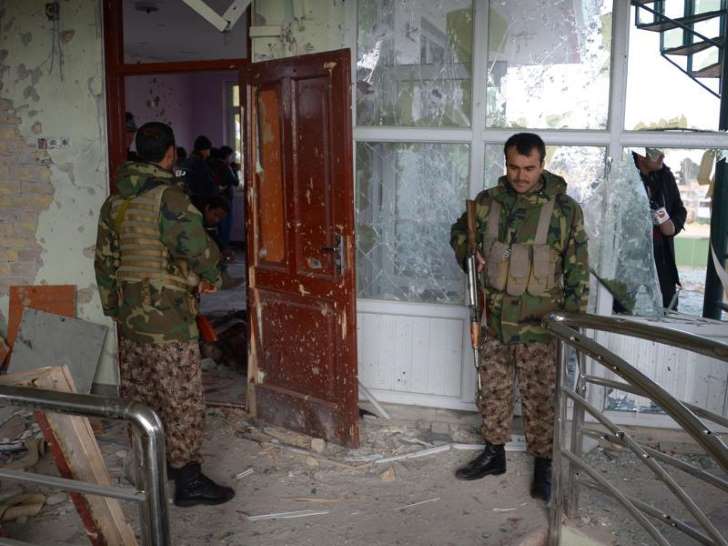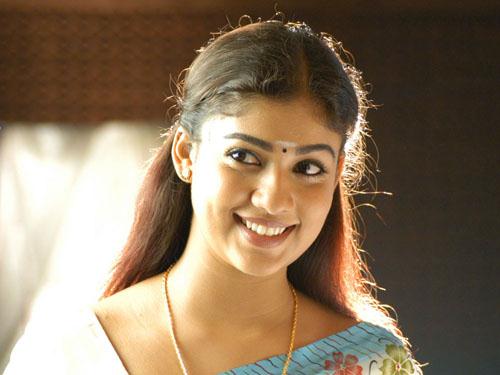April 20, 2016
By Geeta Goindi
Washington, DC – On April 13, in an unprecedented show of strength, Indian-American students, among the brightest and best, flocked to the 2016 White House Science Fair hosted by President Obama.
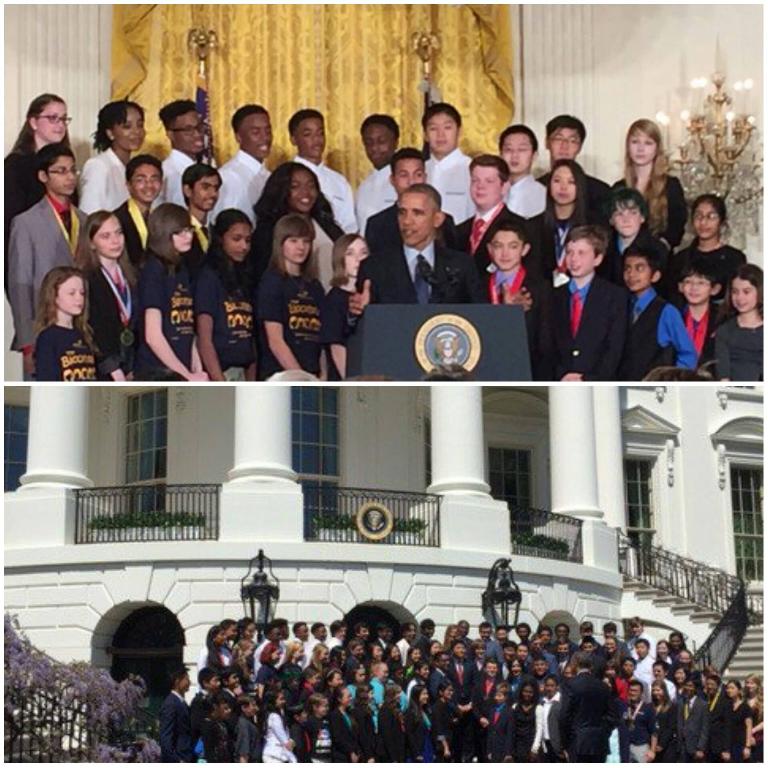
April 20, 2016
By Geeta Goindi
Washington, DC – On April 13, in an unprecedented show of strength, Indian-American students, among the brightest and best, flocked to the 2016 White House Science Fair hosted by President Obama.

Top: President Obama addressing a packed gathering at the 2016 White House Science Fair; and below: President Obama meets student innovators who are excelling in STEM. Photo courtesy: The White House
Whether attending, participating or exhibiting their fascinating projects, they stamped an imprint on one of the most eagerly-awaited, educational and exciting events held at the White House.
In his remarks to some 130 students excelling in STEM (Science, Technology, Engineering and Math) across the country, Obama singled out a few whiz kids including two Indian-Americans: Maya Varma, 17, a senior from San Jose, California, who won First Place Medal of Distinction for Innovation at the Intel Science Talent Search in March, for inventing a device to diagnose chronic lung diseases, which came with a prize of $150,000; and Anurudh Ganesan, 16, of Clarksburg, Maryland, winner of the 2015 Google Science Fair Lego Education Builder Award, who created a project which can effectively transport vaccines in the last leg of distribution without the use of ice and electricity, saving potentially thousands of lives throughout the world.
To these “young people”, Obama said, “All of you are showing the rest of us that it’s never too early in life to make a difference! You teach us about the power of reason and logic, and trying things and figuring out whether they work, and if they don’t, learning from that and trying something new. And you remind us that, together, through science, we can tackle some of the biggest challenges that we face” such as fighting cancer, combating climate change, feeding the world, and writing code that leads to social change.
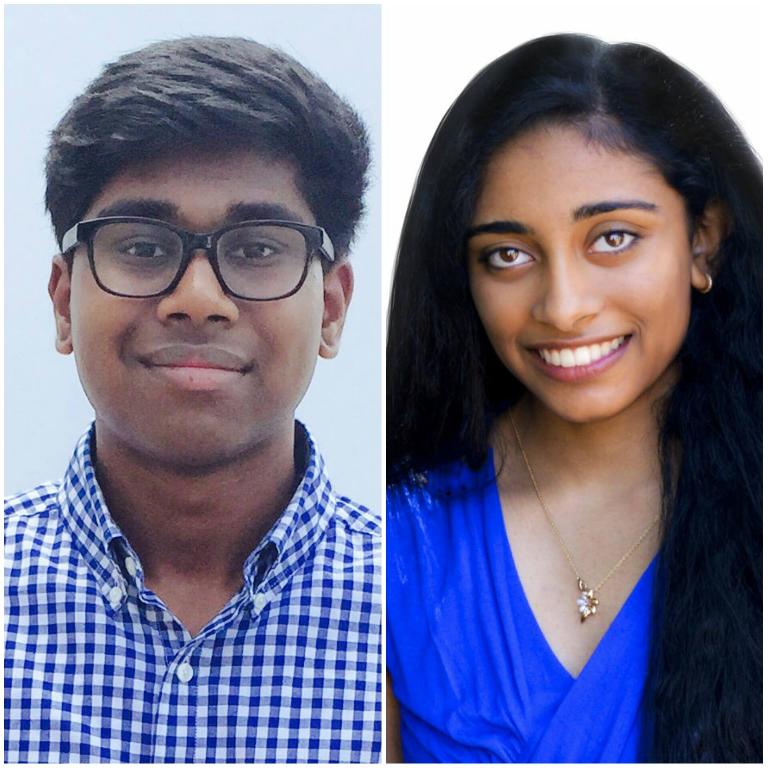
Indian-American whiz kids Anurudh Ganesan (left) of Maryland, and Maya Varma, of California, were singled out by President Obama at the 2016 White House Science Fair. Photo courtesy: The White House
Maya has developed a 3D printed version of a machine used to analyze lung health that costs a mere $35. President Obama told the gathering of innovators, scientists, educators and journalists in the jam-packed East Room of the White House, “Maya is using a low-cost microcontroller, software freely available on the Internet, and a smartphone, and she designed a tool that allows people with asthma and other lung diseases to diagnose and monitor their own symptoms. So, her goal was to use smartphone technology to make diagnostic tests for all kinds of diseases a lot cheaper”.
Quoting Maya, he said, “My aspiration is not only to create the next big thing in my field one day, but also to make it accessible to more than a privileged few in the world”.
President Obama marveled at her accomplishments and confidence. “The only problem with the Science Fair is it makes me feel inadequate”, he quipped, to much laughter from the audience, adding, “because I think back to my high school and, first of all, I didn’t have a field. Maya talked about her ‘field’. I don’t know exactly what my field of study was at that time, but it wasn’t that”, he said, evoking more laughter.
About Anurudh, the President noted that when he “was little, his grandparents walked him ten miles to a remote clinic in his native India for vaccinations, only to find out that the vaccines had spoiled in the heat. Though he eventually got the shots that he needed, he thought, well, this is a problem, and wanted to prevent other children from facing the same risk. So, he developed what he calls the VAXXWAGON, and it’s a refrigerator on wheels that transports vaccines to remote destinations.
That’s the kind of innovation and compassion that we’re seeing from so many of these young people”, he said, with much admiration.
Throughout his remarks to the largely young gathering of student scientists, Obama emphasized the “incredible talent” on display at the Science Fair, the sixth and final one of his presidency.
“Some of the best moments that I’ve had as President have involved science and our annual Science Fair”, he admitted. “I’ve just been able to see the unbelievable ingenuity and passion and curiosity and brain power of America’s next generation, and all the cool things that they do”.
Among other Indian-American students who exhibited their projects at the Science Fair were: Deepika Kurup, 18, of New Hampshire, who has devised a solar-powered technology to rapidly remove bacteria from water; Yashaswini Makaram, 17, of Massachusetts, created a new cell phone security tool to uniquely identify the cell phone’s owner; Hari Bhimarajua, 12, of California, designed a portable, low-cost teaching tool to help visually impaired students learn the periodic table of elements; Sanjana Rane, 18, of Kentucky, helped discover how a particular protein could be used to detect and treat renal fibrosis, preventing future kidney failure; and Neil Davey, 20, of Maryland, whose technique focuses on detecting cancer early, when there are often more treatment options and better outcomes for cancer patients.
Clearly impressed by their accomplishments, President Obama said, “One of the things I find so inspiring about these young thinkers and makers is that they look at all these seemingly intractable problems as something that we can solve. There is a confidence when you are pursuing science. They don’t consider age a barrier. They don’t think, well, that’s just the way things are. They’re not afraid to try things and ask tough questions. And above all, what we’ve seen today is that they feel an obligation to use their gifts to do something not just for themselves but for other people as well”.
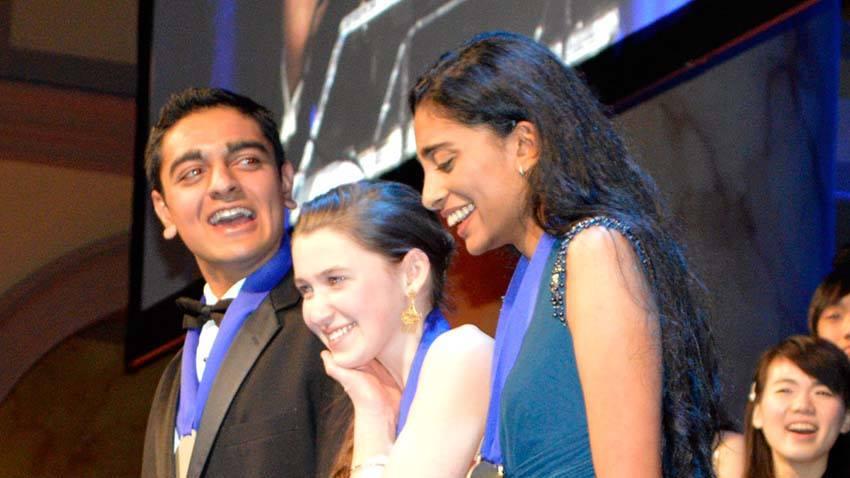
Indian-American teen scientist Maya Varma (right), of California, who won First Place Medal of Distinction for Innovation at the Intel Science Talent Search 2016, was the first student to be singled out by President Obama in his remarks at the 2016 White House Science Fair. Photo credit: Society for Science & the Public
He noted, “Science is not something that is out of reach, it’s not just for the few, it’s for the many, as long as it’s something that we’re weaving into our curriculum and it’s something that we’re valuing as a society”.
Still, he acknowledged the structural biases that exist in science and promised that his administration would work towards removing them. In this regard, he mentioned, “We’ve got to get more of our young women and minorities into science and technology, engineering and math, and computer science”.
“We’re not going to succeed if we got half the team on the bench, especially when it’s the smarter half of the team”, he said, to laughter.
“Our diversity is a strength. And we’ve got to leverage all of our talent in order to make ourselves as creative, and solve as many problems, as we can be”.
Pointing to some strides when it comes to gender parity in science, Obama said, “I’ve been really pleased to see the number of young women who have gotten more and more involved in our science fairs over the course of these last several years”.
Community Special by MYDOSTI.COM






































































































